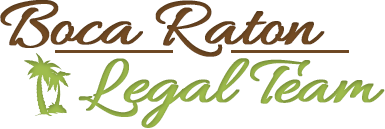Chapter 13
Bankruptcy laws and petitions in the United States Code (USC) are covered under Title 11. Chapter 13 is a form of bankruptcy provided by Title 11. It involves debt readjustment through a court approved plan for reorganization. Under Chapter 13, the reorganization plan must be agreed upon by the creditors, once it is approved by the court. On the contrary, debt readjustment under Chapter 11 seeks approval of creditors on the reorganization plan. This may/may not be agreed upon by the creditors and another plan may be drafted.
Chapter 13 Plan
The rehabilitation plan proposed by debtors after filing for bankruptcy under Chapter 13 of the Federal Court is called the Chapter 13 plan. The aim of this plan is to achieve debt readjustment by settling the claims made by creditors. Once the court approves the plan, it must be agreed upon by creditors. Sometimes an organization may be faced with a situation where they do not have the disposable income required to support the reorganization plan. In such scenarios, they are not eligible for Chapter 13 bankruptcy.
Debt readjustment under Chapter 13 Plan must be carried out over a period of 3-5 years. Chapter 13 bankruptcy is the first choice for numerous bankrupt corporations and individuals. However, it comes with some positives and negatives.
Benefits Of Chapter 13
- Debts which cannot be discharged under Chapter 7 can be discharged under Chapter 13
- Chapter 13 allows for the delay of foreclosures, if any
- Chapter 13 can be filed immediately to discharge the remainder after primary liens has been discharged through Chapter 7
- Both – exempt and non-exempt properties can be retained by the debtor under Chapter 13
- The co-signers of the debtor are protected under Chapter 13
- Wage garnishment is prohibited under Chapter 13, so there are no claims against income
- Payment term can be extended
- Interest rates can be reduced on certain loans
Drawbacks Of Chapter 13
- Chapter 13 bankruptcy is visible for a long period of 7 years – proving to be extremely damaging for creditworthiness
- All debts cannot be discharged under Chapter 13
- There are numerous costs to be born. These include court fees, attorney fees, trustee fees, etc.
- Chapter 13 bankruptcy does not cover stock brokers and commodity brokers
- Since it appears on the credit report, it may be extremely difficult to borrow large sums of money thereafter
- Living conditions are affected because the debtor is legally bound to follow a court-decided budget
- The cost of legal fees required for Chapter 13 bankruptcy as well as the cost of proceedings is higher
- Due to the negative effect on creditworthiness, loans can only be acquired at high interest rates
Chapter 13 bankruptcy should be filed after duly evaluating all the pros and cons. Though a popular form of bankruptcy law, it involves various secondary procedures that need to be kept in mind. It is the second most commonly filed bankruptcy petition after Chapter 7.





